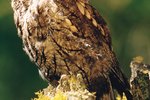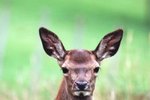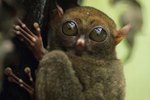
The different color of owls' eyes do more than help you identify the species. Eye color seems to be an indicator of when the owls prefer to hunt, whether it's at night, during the day or in the soft light of dawn and dusk. Regardless of eye color, owls tend to have excellent eyesight and the ability to see in the dark.
Owl Eyes
Instead of being round, like human eyes, owl eyes are longer and more tube-shaped. This lets more light in so owls can see better in the dark. The shape restricts the movement of the eyes, however; instead of moving their eyes side to side like a human can, owls must turn their heads to see to the sides. They have adapted to stationary eyes by being to turn their heads up to 270 degrees.
Eye Color and Activity Times
Although not accurate with every owl species, eye color tends to indicate what time of day the owls prefer to be active. There are always exceptions, but most owls hunt around the same time as other owls with the same color eyes, according to Raptor Rescue, a bird-of-prey rehabilitation charity. The link is not fully understood but it's pretty reliable: Species eye color correlates to daily activity periods.
Orange Eyes
Most owls that sport orange eyes are active around dawn and dusk, which is known as being crepuscular. These owls, such as the Eurasian eagle owl and the great horned owl, can be found around the world. Large owls, often up to about 22 inches long, they hunt prey such as mice, rabbits and birds. The great horned owl is populous in the United States and is common even in urban areas.
Dark Brown or Black
Owls that have dark brown or black eyes typically are nocturnal, which means they prefer to hunt at night. The dark color doesn't help the owls see in the dark, but it might help camouflage them better than brighter-colored eyes. Owls with dark eyes, such as the northern spotted owl, barred owl and barn owl, follow the trend of hunting at night, although they are sometimes seen out in daylight, especially on cloudy days. According to the Idaho Department of Fish and Game, barn owls can even catch prey in total darkness by using their hearing to help.
Yellow Eyes
Yellow eyes often appear on owls who are diurnal -- they prefer to hunt during the day. The great gray owl, topping out at about 30 inches long, is an example of a diurnal owl with yellow eyes. In addition to excellent eyesight, these birds can hear mice or other small rodents moving beneath the snow and swoop down to grab them with their talons. Short-eared owls are a bit smaller, about the size of large crows, but they are powerful hunters during the day.
References
Photo Credits
-
Comstock Images/Comstock/Getty Images




